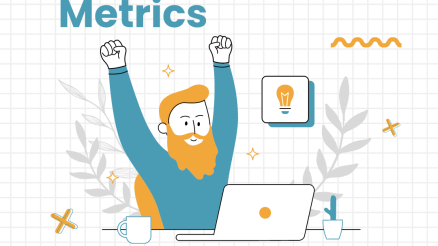Change leaders are often called upon to manage change in their organizations. A successful transition is reliant upon strong planning, communication, and execution.
Luckily, there are a number of tools and resources available to help leaders navigate this process.
The right change management toolkit can be a valuable asset in helping you to do just that.
This blog post provides an overview of some of the most useful change management tools. It also includes tips for putting these tools into action. By using these resources, leaders can create a smooth transition for their team and organization.
Let’s discuss some of the key components of a change management toolkit and why leaders need a change management toolkit.
What is change management toolkit?
A change management toolkit is a collection of resources and tools that can be used by leaders to manage change effectively. The toolkit can include change management templates, checklists, training materials, and more. The change management toolkit should be designed to help leaders plan for, implement, and track changes in their organization. The toolkit can also help leaders to communicate change effectively to their team members. By using a change management toolkit, leaders can more effectively manage change in their organization.
Why do leaders need a change management toolkit?
By using a change management toolkit, a change leader or manager can make sure that changes are made smoothly and with minimal disruption.
There are many reasons why change management toolkit is important for leaders.
First, change can be difficult to manage without having proper resources and tools.
Second, change can be disruptive, and a toolkit can help you minimize the disruption.
Third, change can be costly, and a toolkit can help you control costs.
Finally, change can be risky, and a toolkit can help you manage risks.
The toolkit can help leaders to assess the impact of change, develop change strategies, and implement change plans. It can also help leaders to communicate change to employees and stakeholders, and to monitor and evaluate the progress of change initiatives. By using a change management toolkit, leaders can increase the likelihood of success for their change initiatives.
Additionally, the toolkit can help leaders to avoid or mitigate the negative impact of change on employees, customers, and other stakeholders. Leaders who use change management toolkits can benefit from increased organizational effectiveness and improved stakeholder relationships.
08 Key components of a change management toolkit
Change management toolkit will include everything you need to know about change management, from the basics of how to manage change effectively to more advanced concepts and tools. It should cover topics such as change management theory, change management models, change management tools and techniques, and change management best practices.
1. Introducing change management
This section explains the basic concepts of change management, its principles and process. And what are key things to consider before going for change. This section may include introduction to famous theories and models of change management. It’s important that every manager and leader must have some theoretical understanding of change management and how it works and what are practices other organizations are adopting to implement successful change.
2. Explaining the rationale and vision for change
Building on the introduction of change, this section focus on why change is necessary in your organization. What is its rationale. What are those factors and reasons which are asking for a change. What would be the benefit of change. So this section answers why part of change. It gives clarity on proposed change that leads to developing a vision for change. A powerful and compelling vision for change should also be included in this section. It is like to paint a picture of the future and show that how the future would be better than the present.
3. Assessing change readiness
This section reflects on organisational ability to carry out proposed change. It highlights how organisational culture and values are consistent with the proposed change, how organizational leadership has commitment and resolve to lead the change and what resources and capacity is available to execute the change. For this analysis, leaders must use change readiness assessment tool that helps to measure organizational preparedness to respond and undertake change. Another important area of this section is stakeholder analysis that what are key stakeholders of proposed change and what are their roles and how they should be engaged in change process.
4. Communicating change
A successful change management is all about how leaders and managers communicate and present change to their team and stakeholders. An effective change communication leads to understanding of change idea and help to overcome resistance to change. This section contains highlights of change communication strategy and how it will work during change process. A change communication plan must be presented in the toolkit to inform all stakeholders that what would be channels of communication, key messages or narrative of change, role and responsibilities and what would be sources of knowledge used in change process.
5. Developing change management plan
This section presents an outline of tasks that would be like a roadmap to implement change. It is a strategic tool that guides the team during implementation of change. Change management plan also highlights practical steps that would be taken to complete all tasks of change management. This plan also identify what human resource would be doing what and when. What would be contingency plans and what are risks associated with execution of change.
6. Building capacity to implement change
Building capacity of human resource or training of employees is the crucial part of change management. This toolkit must include training need assessment tools and templates to be used by change leaders to assess needs of training. What skills and knowledge would be required by employees to take up new roles and responsibilities and execute change. It’s always good to present training calendar and resources required to plan trainings for employees.
7. Setting KPIs to measure change
Every change leader needs to know that whether change was successfully implemented or not. What does success of change mean? How would it be measured?. For this purpose, the toolkit must contain a list of Key Performance Indicators (KPIs) of entire change process that would help to track progress and measure success. These indicators must be quantifiable so that change leaders can see the data and take informed decisions and corrective actions if things are not heading in right direction.
8. Preparing Audit checklist
The last section of the toolkit provides with a change management audit checklist which is a tool to assess organizational change processes and identify gaps and areas for improvement. The checklist covers a wide range of topics, from organizational culture and structure to communication and training. By assessing each of these areas, the checklist presents a comprehensive overview of an organization’s change management practices.
Final Words
Change management toolkit for leaders is an important resource for those who are managing change. It equips change leaders with all necessary knowledge about change and required tools to successfully implement change. A good change management toolkit includes: why change is needed (rationale), theories and models of change, change readiness assessment tools, communication tools and training plans, tools and resources for measuring change and preparing audit checklist. By having a solid understanding of these components and how to apply them, change leaders can increase their chances of success when leading changes within their organizations.



